Make a simple turkey brine and brine your fresh or thawed turkey before cooking it. Brining helps the turkey retain moisture and will make the cooked meat more juicy.

Every Thanksgiving season, I breathe a sigh of relief when I finally have my turkey. A few years ago everyone was talking about brining -- something I had never done.
As my bird thawed in the refrigerator, I start wondering how do you make a simple turkey brine? I had to start simple or I would have been too intimidated to try it.
Fortunately, a simple brine is easy. You only need water, salt, and a large enough container to hold the turkey and the brine.
What is a Brine?
A brine is a solution of salt water. Dissolve the salt in the water to make the salt water brine. For a turkey brine, use a 6% brine solution. That means you should dissolve 1 cup of salt into every gallon of water you use.
When you are ready to try something new, consider a buttermilk brine. It makes a tasty dish too.
How Do I Make a Simple Turkey Brine?
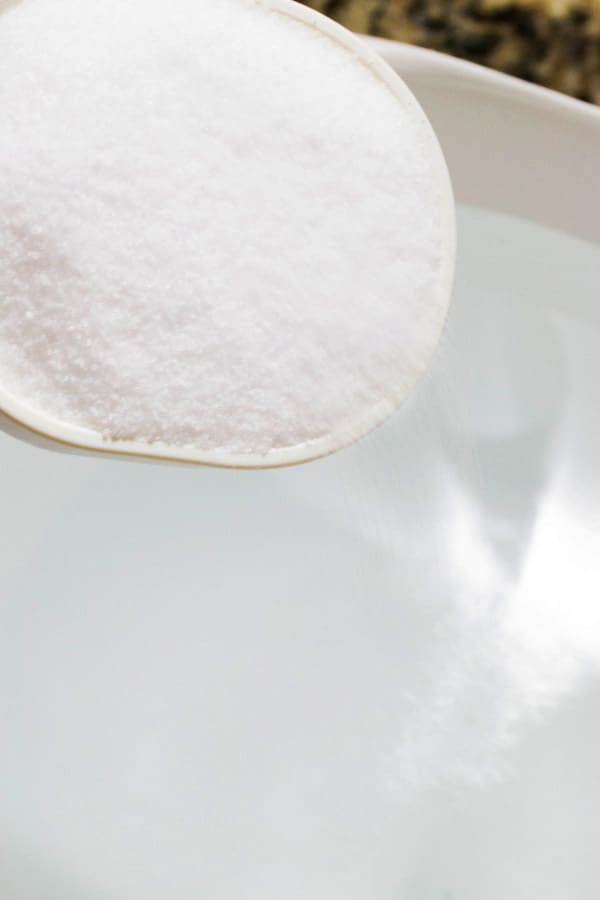
Mix up a salt water solution.
- For each gallon of water, add 1 cup of salt.
- Stir the salt into the water until it dissolves.
- Pour the salt water solution over the turkey.
Cover the turkey completely in the brine. Most turkeys need at least 2 gallons of brine to completely cover them. Very large turkeys will need even more gallons of brine.
What is Brining?
Brining is soaking your turkey in the salt water solution brine, keeping the turkey cold as it soaks. Brining is similar to marinating meat.
Brine your turkey in the refrigerator if the bird and container can all fit in the refrigerator.
Brining can make your cooked turkey more tender and juicy. It can decrease moisture loss during cooking by as much as 40%.
Many people use a wet brine to get juicy meat. However, you can also try a dry brine, which involves rubbing salt all over the turkey under the skin.
What Kind of Turkey Should I Brine?
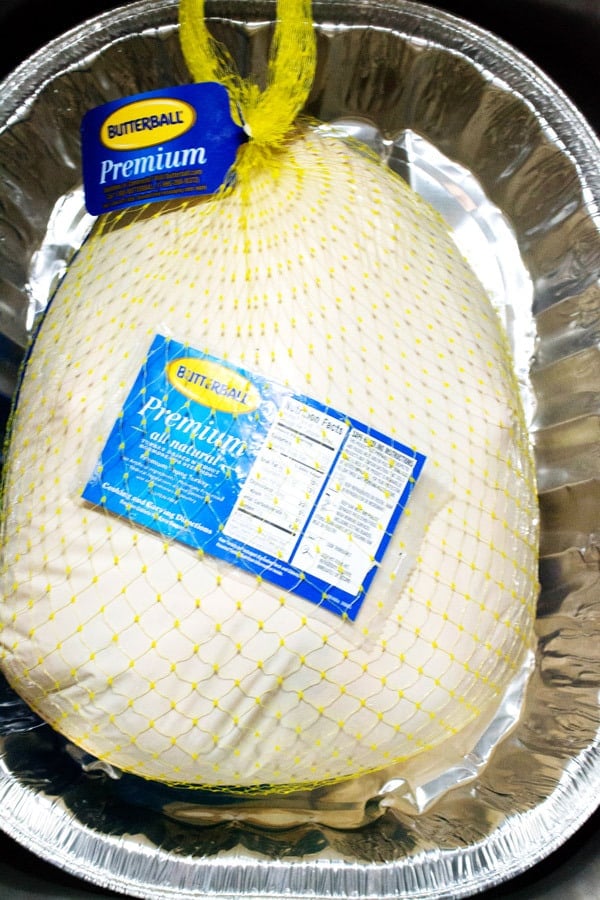
All turkeys can benefit from a brine.
Many experts recommend brining fresh turkeys that have not been frozen. As the turkey cooks, it will retain moisture and be more juicy.
What about frozen turkeys? Most frozen turkeys come in some sort of broth or solution, so should you brine them? Yes, a frozen turkey can benefit from brining.
When turkey is frozen it loses moisture. When the turkey is freezing, ice crystals form in the meat, penetrating the cells. The cells then lose moisture. Brining a thawed (previously frozen turkey) can help replenish some of the moisture lost during the freezing process.
Where Should You Brine Your Turkey?
If your turkey is small enough, you should brine it in the refrigerator. This is the best way to control the temperature. However, it is hard to fit a turkey and brining container in the refrigerator.
If you don't have room in the refrigerator, use a food grade bucket or an ice chest/cooler for brining.
How to Brine a Turkey
- Remove the neck and giblets.
- Rinse the turkey with water, including in the cavity.
- Mix up the brine.
- Place the turkey (breast side down) in a large stockpot, a brining bag, a cooler, or food grade bucket.
- Pour the brine over the turkey, covering it completely.
- Place in the refrigerator to brine. Use a container big enough to hold the turkey and brine solution in the refrigerator. Be cautious about the food near the raw turkey. Try to have the brining turkey on its own shelf in the refrigerator.
- If brining in a cooler, place enough ice or ice packs to keep the water temperature between 32° and 40° Fahrenheit.
- If brining in a food grade bucket, add enough ice to keep the water temperature between 32° and 40° Fahrenheit. Check the temperature every 2 hours (or more often if the weather is warmer) and replenish ice to keep the temperature consistent.
- At least once, rotate the turkey, so the whole turkey is covered with brine.
How to Brine in a Food Grade Bucket
If your turkey is too large to fit in the refrigerator, you have a few options. My favorite method is to use a food grade bucket. It is large and can hold everything. We use the same bucket every year. And we only use the bucket for brining.
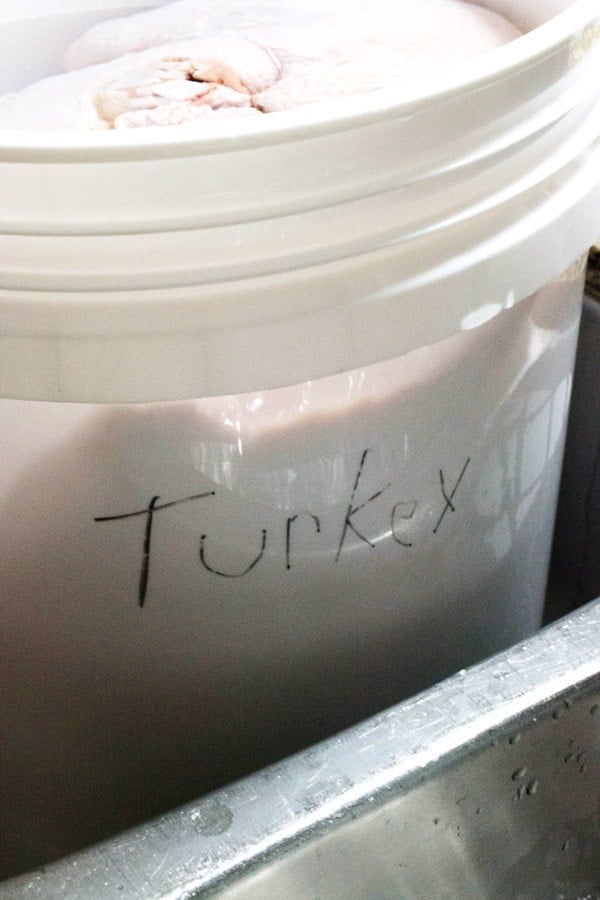
- First, get a food grade bucket (often available at Home Depot or Lowe’s). It MUST be a food grade bucket. It will probably be white.
- Next, place the turkey breast side down in the bucket.
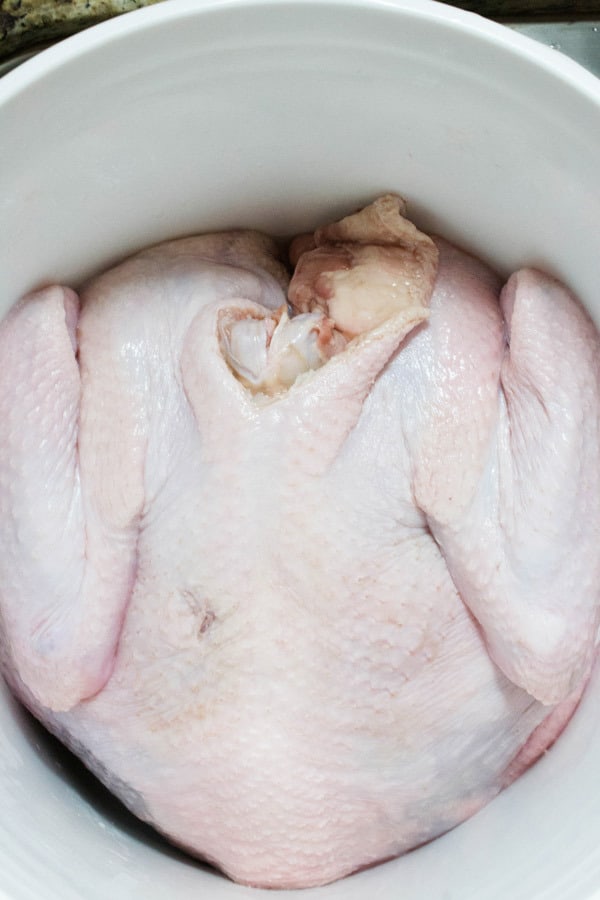
- Pour the brine over the turkey covering it completely.
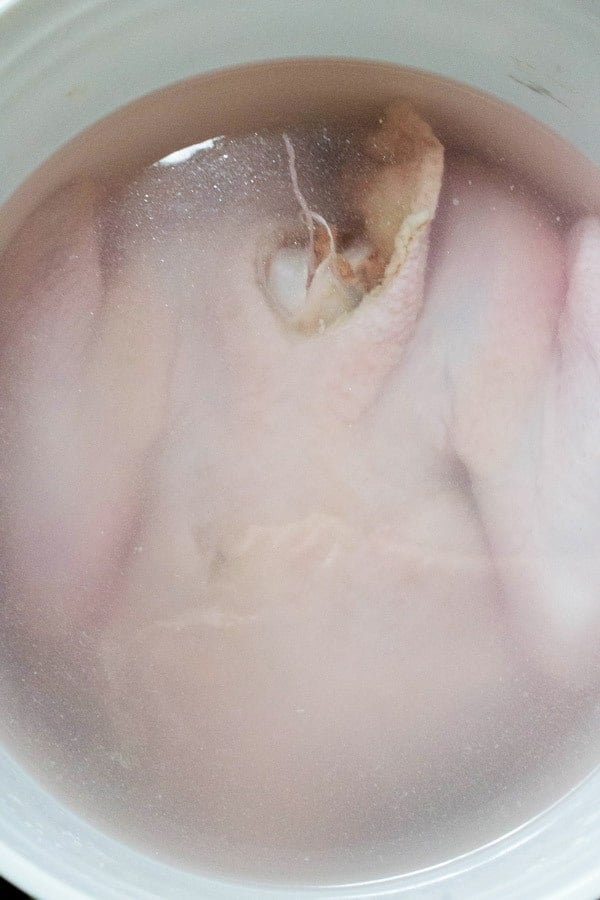
- Add up to 5 pounds of ice on top of the turkey.
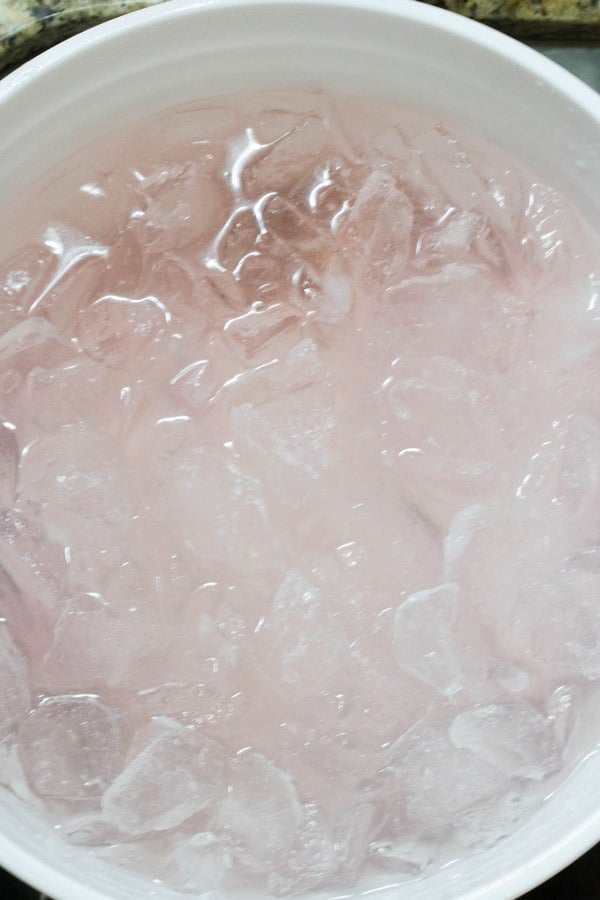
- Place the lid on the bucket and keep in a cold place, such as the basement or garage, depending on the temperature.
- Periodically check the water temperature. Open the lid and insert a thermometer into the water. It should be between 32° and 40° Fahrenheit (the temperature your refrigerator should be at).
- If the ice starts melting, add more ice to keep the turkey chilled and in the food safe zone. Read about food safety to learn more.
How to Brine in an Ice Chest
To brine in an ice chest, you need an ice chest or cooler large enough to hold both the turkey and the brine.
- Place the turkey breast side down in the ice chest or cooler.
- Pour the brine over the turkey covering it completely.
- Add ice packs or up to 5 pounds of ice on top of the turkey.
- Place the lid on the cooler and keep in a cold place, such as the basement or garage, depending on the temperature.
- Periodically check the water temperature. Open the lid and insert a thermometer into the water. It should be between 32° and 40° Fahrenheit (the temperature your refrigerator should be at).
- If the ice starts melting, add more ice or frozen ice packs to keep the turkey chilled and in the food safe zone. Remember your food safety guidelines for raw meat.
How Long Do You Brine Your Turkey?
Soak your turkey in the brine for 45 to 60 minutes per pound.
For example, if you have a 10 pound turkey, you should soak it in brine for 7 ½ to 10 hours.
What Do You Do When the Brining is Finished?
After the turkey is finished brining, remove it from the solution and drain the cavity. Pat it dry. It is now ready for cooking.
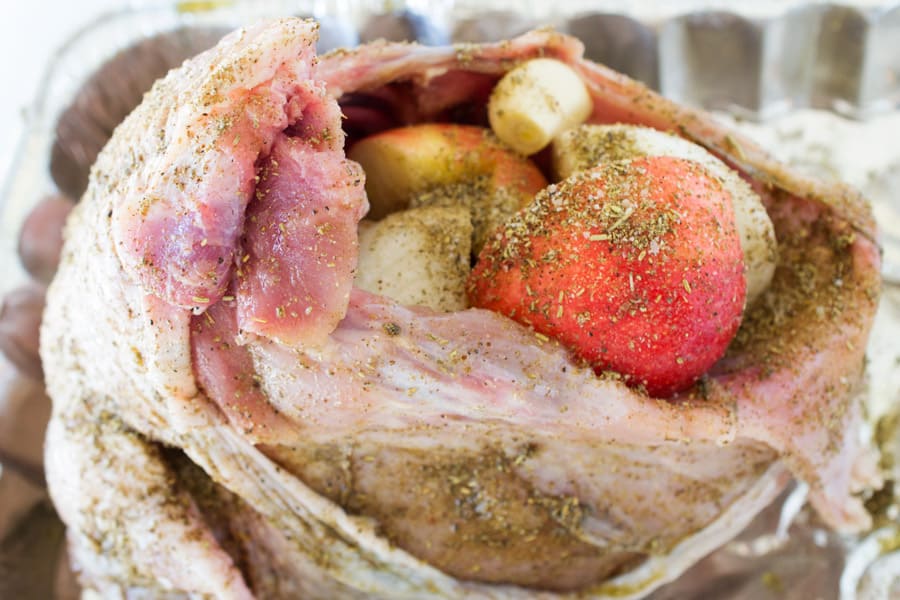
Fill the cavity or rub herbs and spices under the skin and cook according to your recipe.
How Does Brining Work Anyway?
To understand how brining works to retain moisture in a turkey, I turned to The Food Lab by American chef J. Kenji Lopez-Alt. When a turkey is soaked in a brine, the salt dissolves some of the muscle proteins in the bird and the muscle fibers loosen. When this happens, the turkey absorbs more moisture. Then when the turkey is heated, the salt helps keep the muscles from contracting, keeping the moisture in while the turkey cooks.
Recipe
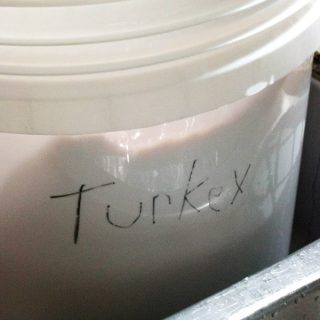
Simple Turkey Brine
Ingredients
- 1 whole turkey
- 2 + gallons of water to cover the whole turkey
- 1 cup salt per every gallon of water
- Container to hold turkey and salt water
Instructions
- REMOVE the neck and giblets from the turkey.
- RINSE the turkey with water, including in the cavity.
- MIX up the brine. Mix 1 cup of salt into every gallon of water. Stir to dissolve the salt.
- PLACE the turkey (breast side down) in a large stockpot, a brining bag, a cooler, or food grade bucket.
- POUR the brine over the turkey, covering it completely.
- PLACE the turkey in the refrigerator to brine. If brining in a cooler, place enough ice or ice packs to keep the water temperature between 32° and 40°F. If brining in a food grade bucket, add enough ice to keep the water temperature between 32° and 40°F. Check the temperature every 2 hours (or more often if the weather is warmer) and replenish ice to keep the temperature consistent.
- At least once, ROTATE the turkey, so the whole turkey is covered with brine.



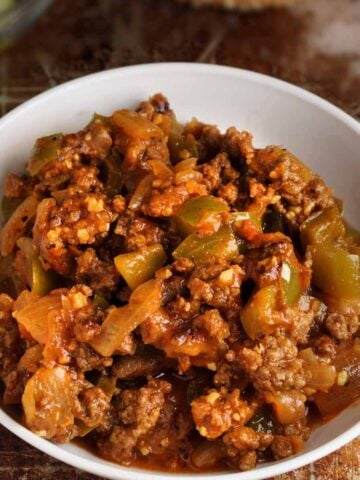

Comments
No Comments